Best 14 tips and tricks to improve the tone of your guitar
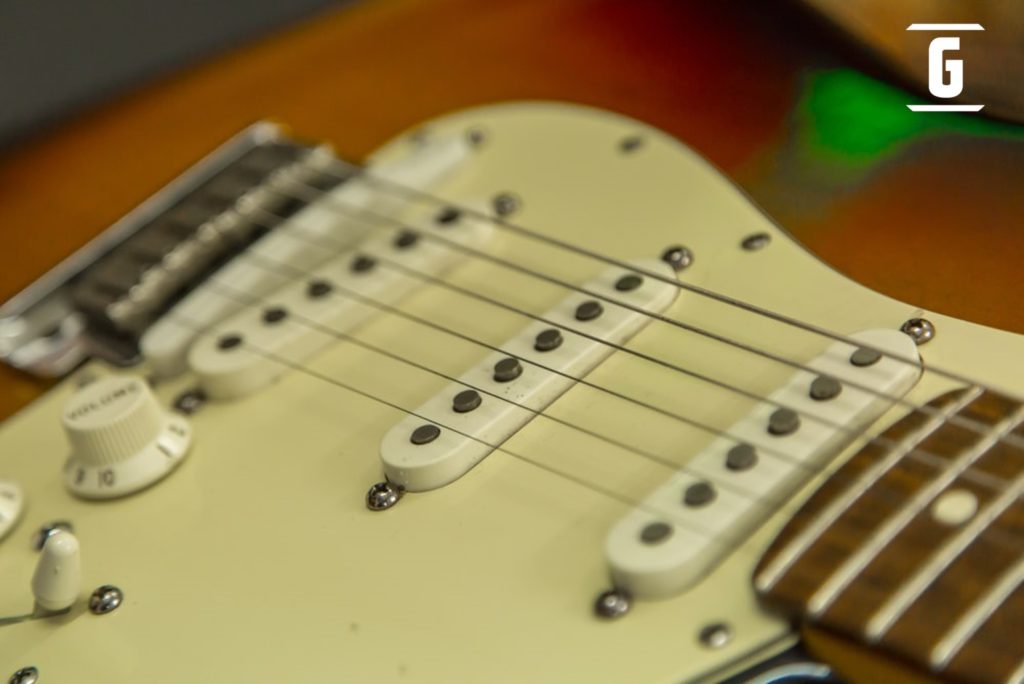
14 tips and tricks to improve the tone of your guitar easily and cheaply that will allow you to get the most out of your instrument.
How do we build our tone as guitarists?
Our tone is a set of personal and subjective aspects that make up our way of sounding. This includes musical tastes, technical resources, and playing style. If we add to that our equipment and the way we configure it, what we call “our tone” is formed. This is our fingerprint as guitarists, that audio that differentiates us from the rest.
In a series of notes, we will go through each of these concepts so that you can improve your tone, so that you get the best of you as a guitarist, of your guitar, of your amplifier, of all your gear and that you expand your technique and resources.
Get the best out of your guitar
We are all or were at some point guilty of spending too much time obsessed with equipment, looking for the latest pedal, amp or guitar model, or looking for those magic pickups that give us the tone of that guitarist we admire so much. But it is more profitable to study and learn to make the best of what we already have to look for magic formulas.
It is important to experiment to find what we want, and then start looking for it. In that sense, this note is aimed at those who seek to get the best out of their instrument, regardless of their level or style.
The best 14 tips to improve the tone of your instrument
- Play as many guitars as you can
- Learn to use the controls of your guitar
- Try the Treble Bleed
- Connect the tone control to the bridge pickup of your Strat
- Disconnect the tone control to the pickup from the neck of your Telecaster
- Regulates the height of the pads
- Regulates the action of the guitar well
- Choose the best string gauge
- Bone nut
- Free yourself from buzz and hum
- String your Tune-o-Matic in “Wrap-up”
- Bigger the better: check your Strat’s vibrato block
- Take off the back cover of your Strat
- Remove the covers from the pads.
Play as many guitars as you can
The first tip to be able to improve the tone of your guitar is, instead of obsessively studying the specifications in brochures, in an online store ad or in your favorite forum, go out into the real world and play as many guitars as you can. You will discover new tones and details that you did not know. They will inspire you to define your audio. They will serve as a reference to know where you are standing.
You can find guitars that sound regular, others that sound good, some that sound barbaric and a few that inspire you with new things and you can’t stop playing them. They will also allow you to know how to identify what makes them special, and work to achieve it.
Learn to use the controls of your guitar
Before going to pedals, you should explore the universe of tone that the different positions of the pickups allow you, the different levels of volume and tone that your guitar offers you.
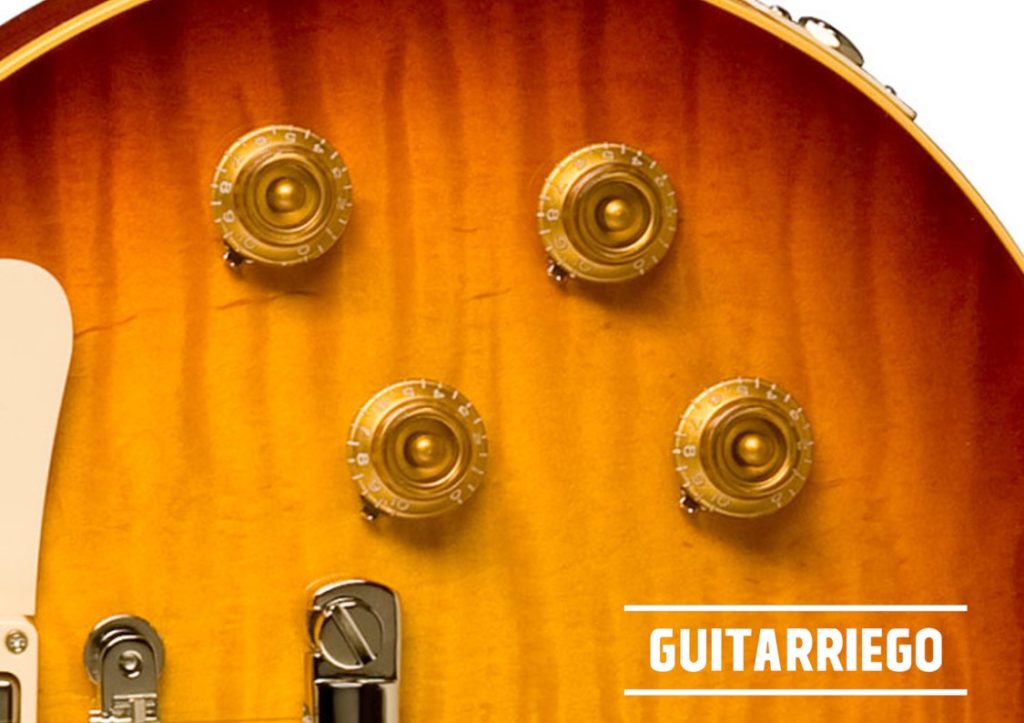
Use the volume pot
By lowering the volume or raising it, you can manage the overdrive on your equipment, going from clean when lowering the volume, going overdriven by simply turning up the volume on your guitar. All without the need to step on any pedal. In the last interview with Slash’s technician, he explained that Slash increasingly uses fewer pedals and increasingly uses the audio from his amplifier, managing the saturation levels from his volume control.
Most of us use the guitar with tone and volume always open, that is to say 10, but there are other ways to configure your guitar. So some guitarists like to set everything for their base audio with their guitar volume to 7 or 8. Then turning it up to 10 gives you a volume boost for your Lead sound.
Use the Pickup Selector and Forgotten Knob: Tone Knob
Joe Bonamassa explains: “What you have here (on your guitar) is a complete sound platform without having to plug it into a single pedal. How? You have the volume knobs, the pickup selector, and the tone knobs, which are the forgotten pedals – referring to the tone controls – or the forgotten knob. (…) There are millions of tones in a guitar, first explore them and only then add the pedals. “
Try the Treble Bleed
Although everything is a matter of taste. There are many instruments that when the volume is lowered, their audio becomes doughy, bland, without definition. The solution to this is a very simple modification known as a Treble Bleed circuit.
This mod consists of wiring a capacitor, typically between 680-1,000pF, between the input and output pins on the volume knob of your guitar. Some also wire a resistor, typically 150k for a 250k pot or 330k for a 500k pot, in parallel. Bluesman Dan Patlansky explains the appeal of this: “It’s a cheap thing to do, but you can get a lot of different textures.“
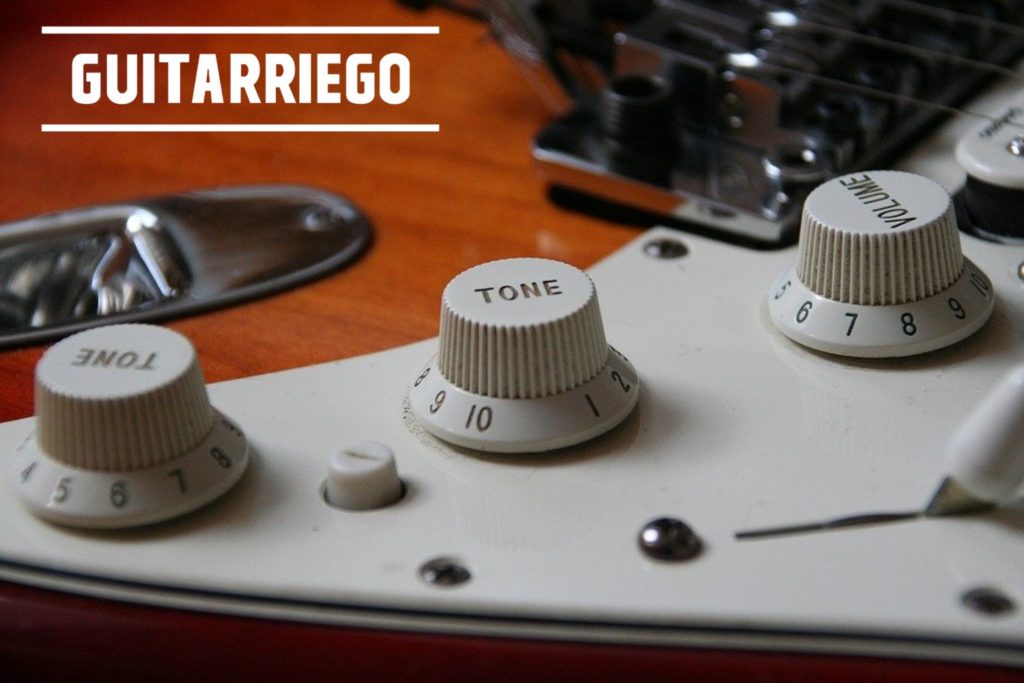
Connect the tone control to the bridge pickup of your Strat
Perhaps many Strats today come with the tone control connected to the bridge pickup. But it’s not always like that, vintage guitars didn’t have it. In case you don’t have it, just go for it, it’s an easy mod. All you need is some wire, tin, and a soldering iron.
This will give you more control and versatility in position 1, the bridge, of the Strat. In this way, you will be able to kill the harsh or annoying high of the bridge of your guitar.
Disconnect the tone control to the pickup from the neck of your Telecaster
For many guitarists, the bridge pickup of the Telecaster can be very sharp. The solution is to close the tone pot a little. The problem with this is that in the telecaster the tone pot is master, that is, it affects both pickups and the neck pickup with the pot closed, even if it is a little it can sound a bit doughy and bland. To avoid opening and closing the tone control every time you change pickup positions, the pickup is disconnected from the neck tone.
This will take away the ability to play with the tone on the neck, but will give you the freedom to control the tone of the bridge more freely. Another advantage that it has is that the position of the neck will gain shine, something that most of the guitarists ask for. The Tone Pot is a resistor that, even at 10, subtly eats highs.
Regulates the height of the pads
Each pickup is a world of tones and nuances. To find the different sounds, you have to regulate the pitches. The further you move the pickup from the strings, the less output and brightness the sound will have, also, if the distance is not exaggerated, it improves the sustain by affecting less the magnetic field generated with the string by the pickup magnet. On the contrary, the closer it is, the more attack and output and the brighter the audio will be. You can also play by varying the heights of each end of the pickup or play with the height of the screws – on the humbuckers – to find the perfect balance of volume for each string.
Regulates the action of the guitar well
The search for a low action that allows greater speed and agility can affect the free vibration of the string, killing notes. A slightly higher action of an “extreme pistero” setting allows the strings to resonate more freely, gaining sustain and clarity, both playing chords and individual notes.
In addition, a slightly higher action, on lower vintage-style radii, allows more room for bendings. So a slightly raised action sacrifices some speed and agility, but rewards with greater expressiveness and tone.
Keep this in mind, and find the right point where you achieve the best of both worlds. Find the balance of improving your guitar’s tone and playability and comfort.

Choose the best string gauge
There is no single recipe, in general it is believed that the higher the gauge, the more the instrument resonates and the more body the audio has. On the contrary, thinner and lighter strings make it easier to play and have a leaner audio.
Study what your taste is. What do you feel comfortable with? There’s Brian May, Billy Gibbons, and Tony Iommi’s school with fine gauges, or Stevie Ray Vaughan’s school with extremely thick strings.
In general terms, the standard would be to use 0.10 gauge strings or at most 0.09 or 0.11. Remember that a gauge change will most likely require a turnbuckle adjustment and even a full instrument calibration.
Bone nut
The bone is hard, dense, durable and light, and was used extensively by the largest brands. In addition, it is the preferred material for many luthiers. In addition to the benefits in tuning stability and sustain. The bone is also slightly self-lubricating and porous, so it absorbs any additional lubricant applied and remains slippery, reducing friction.
Many tuning problem headaches are caused by a bad nut.

Free yourself from buzz and hum
Isolated power supplies
If you’re playing with a lot of gain or singlecoils, you may be plagued by irritating hums. These are typically generated by the electricity that powers your pedal set. An adequate and isolated power supply is a must if you are serious about maximizing the potential of your equipment. Some sources allow you to plug in pedals from 9 volts to 18 volts.
Faraday cage to your guitar
If you have annoying noises generated by your guitar, especially since you use single-coil pickups, consider shielding your instrument. This is achieved by lining the cavities of our guitar with metal, thus making a metal box that isolates the electronic parts. This will improve the performance of your instrument.
String your Tune-o-Matic in “Wrap-up”
In this way, a softer and easier to play instrument is achieved. Many guitarists use it like this, for example Billy Gibbons. In fact, Joe Bonamassa says this makes a 0.11 string feel like a 0.105 string.
This also allows you to screw the tailpiece further into the body for maximum resonance without creating a very demanding string angle as the strings pass through the top of the bridge.
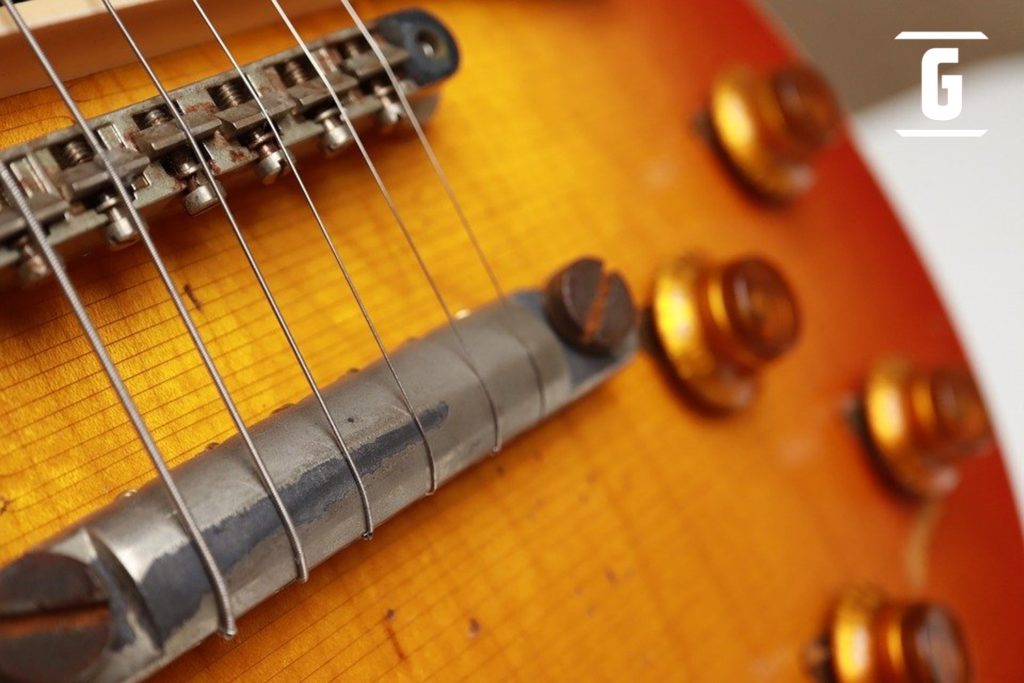
Bigger the better: check your Strat’s vibrato block
A good tremolo block will give your guitar more attack, shine, definition and sustain. Fender originally used 280 gram cold rolled steel vibrato blocks with holes. To find out if your block is made of steel, simply use a magnet; if it is magnetized, it is made of steel.
But you don’t have to spend on a “boutique” steel block, like a Callaham to improve the audio, but at least make sure you have a thick block. Some midrange or entry-level guitars have fine blocks that can be upgraded for very little money.
If your block is already thick, it may have protective paint on it. There are many who claim that removing said paint improves the performance and resonance of the instrument.
Take off the back cover of your Strat
While it sounds a bit over the top, there are many guitarists who believe that removing the back cover of your Stratocaster or the like improves the acoustic and amplified voice of the instrument by removing “the damping effect of the plastic”. Eric Johnson has said: “All the back covers of all my guitars, because I think they sound better without them.“
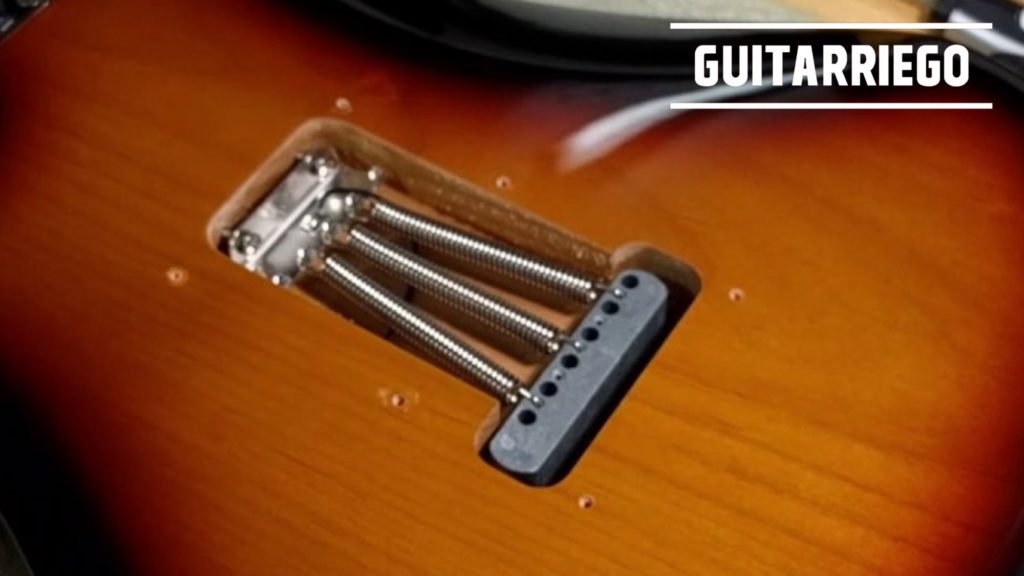
Remove the covers from the pads.
Metal pickup covers affect capacitance and can affect the high frequencies of your sound. Many guitarists remove the covers from the PAFs of their Gibsons and the singlecoil pickup from the neck of their Telecaster. Taking the lid off the pickup serves to gain shine and a little more kick.
On the Telecaster in particular the mid-neck pickup is often felt bland and loosely defined. This makes it difficult to balance the bite of the bridge pickup with the “warmth” of the neck. To really open up the tone of the neck position, try removing the cover. This can give the tone of the neck pickup a pop similar to that of the Strat. If you do this, we recommend that in case the coil is exposed, you send a pickup specialist to cover it to avoid damage such as cutting the coil.
If you do not want to remove the cover, for an aesthetic issue or because you are satisfied with the performance of your pickup, you can try another simple and free modification that is easily reversible. For clarity and definition, cut the wire that connects the cover to ground. The difference won’t be dramatic, but you should be able to hear it. In return, you will get a slight buzz if you accidentally touch the coverlet.

Hopefully all these tricks help you improve the tone of your guitar. If you have more tips to add, leave a comment below or do it through the forum. We can add it to the note to share more useful information.
Related Articles: Top 9 tips to improve your tone with your amp.
For more information and other tips, head over to Guitar Quarter.
Share opinions or also chat about this and more with other musicians in our comments section.






